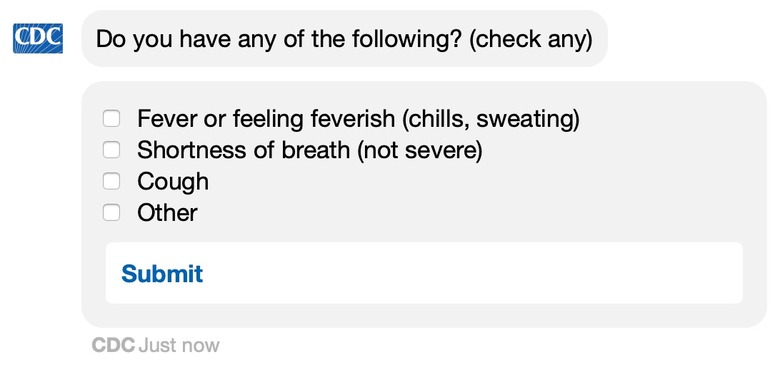The WHO's new COVID-19 app may include contact tracing
The World Health Organization is preparing a COVID-19 app that will check symptoms and advise people whether they're likely to have contracted coronavirus, with officials weighing whether to integrate Apple and Google's Bluetooth contact tracing system. Several countries and organizations have launched coronavirus diagnostic tools, designed to better signpost people to their local healthcare providers if it's likely that they could require a COVID-19 test.
COVID-19's symptoms vary, and indeed there is a phase of asymptomatic infection for the first 48 hours or so. During that time, the individual can be infectious still, but not show any symptoms outwardly. According to the CDC, some people with coronavirus can go on to remain infected – and be infectious – but demonstrate no symptoms whatsoever.
The WHO's app is currently in development, though the organization doesn't expect every country to use it. Instead, the focus is on resource-short countries which may lack the technology and engineers to develop an in-house system, Bernardo Mariano, chief information officer for the WHO, told Reuters. "The value is really for countries that do not have anything," Mariano explained.
The WHO has been tapping volunteer engineering and designer talent to develop the app over the past few weeks. Around five people have been overseeing the development, it's said. When complete, the source code will be released on GitHub as an open-source project.

MORE CDC reveals new symptoms of COVID-19
While assessing symptoms and directing users to their local points of care will be the app's primary purpose, the WHO is also considering extra functionality. One possible addition is a self-help guide, looking to mental health care during the stressful time of pandemic. More controversial, though, is likely to be proximity tracing.
That's where low-power Bluetooth is used to build a log of who may have come into contact with an individual later diagnosed as being infected with COVID-19. By unlocking that proximity database, individuals potentially at risk could be notified, and themselves guided to testing facilities.
Engineers working on the WHO's app have apparently already talked to Apple and Google, who announced recently that they were collaborating on a system for exposure notification that would be compatible across iOS and Android devices. The two companies have built a complex system designed to preserve anonymity as much as possible, with rotating device IDs and only broad-stroke records around how long devices were within range of each other. Even so, privacy advocates have expressed some concerns about the potential for misuse, and the WHO isn't entirely convinced yet either.
"We want to make sure we ring-fence all the risks around it," Mariano said of Apple and Google's system. While engineers on the app have already begun preliminary work to make it compatible, legal and privacy considerations mean it's yet to get the green-light for final approval. The two tech behemoths have committed to not using the collected data for any other reason beyond exposure notifications, and the system will be disabled when the pandemic is over.
Although governments will be able to use the app's code for their own, localized version of the technology, the WHO plans to release a version itself across app stores globally. According to Mariano, the first version of the software should be released later this month.
